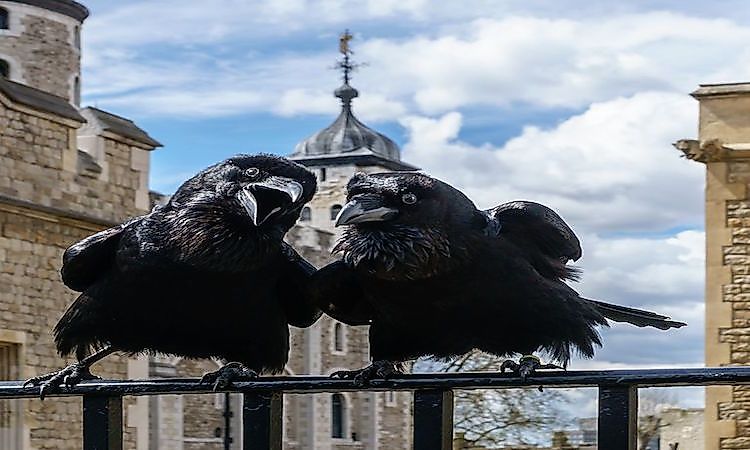Do You Know About The Feathered Guardians Of The Tower Of London?

The Tower of London is an iconic structure and an internationally famous monument in England. It is located in central London on the bank of River Thames. The Tower of London acts both as a gateway to the capital and a fortress, and has an outstanding universal value for aesthetic qualities. The Tower of London is not only famous for its rich history and the innovative Norman military architecture but also because of the presence of six ravens which live in it. The Ravens have a rich history and cultural significance to the Tower of London and Britain.
The Royal Life Of Ravens At The Tower Of London
Ravens might have lived around the Tower of London centuries ago and helped in keeping the streets clean because of their scavenging habits. However, wild Ravens were viewed as threats to livestock and thus were eliminated in most of the areas in the 19th century by shooting and hunting. The Ravens could only exist in the tower in captivity and with the official support. Today, the Ravens are one of the main attractions for tourists visiting the city of London with several high profile visitors like Vladimir Putin being impressed by the verbal skills of the birds. Although the birds are friendly to humans, they are likely to bite if threatened. The Tower Ravens have been the focus for successful captive breeding since 1987 with 17 chicks hatched successfully and raised by two ravens called “Charlie” and “Rhys.” The Ravens in the Tower cannot fly because of the clipped flight feathers on one of the wings. Each of the raven has a colored band on one leg for identification. Each Raven has a name and are cared for by the Yoamen Warders.
Legends Associated With The Ravens In The Tower
The earliest legend that connects the Tower with the Ravens is the tale of the destructive battle against the Irish king who had mistreated Princess of the British. The brother of the princess ordered for the beheading of the king after which the head was buried under the White Hill where the Tower of London now stands. The Ravens are thought to have been attracted to the Tower by the smell of the corpses of the executed enemies of the Crown. In 1535, during the execution of Ann Boleyn who was the Queen of England, the Ravens on the Tower sat silently and gazed at the strange scenes. During the execution of Lady Jane Grey who was a nine-day queen, the Ravens behaved violently by pecking the eyes from the head of the queen.
The keeping of wild ravens with clipped wings in the Tower is associated with Charles II and John Flamsteed. One variation of the legend suggests that Charles II did not like the Ravens’ droppings and was determined to exterminate them from the Tower, but he was convinced otherwise by Flamsteed. Another theory has it that it was Flamsteed who wanted the Ravens to be eliminated from the Tower but Charles II could not comply with his request. The appearance of ravens on the Tower is also attributed to the Great Fire of London in 1666. After the fire, the survivors began killing the Ravens for scavenging, but Flamsteed convinced Charles II that killing the Ravens would be an ill omen to the Kingdom. Charles ordered that six ravens to be kept in the Tower.
Mischievous Ravens Of The Tower Of London
Sometimes Ravens fall out of favor with the Tower because of inappropriate behavior. Raven George was demoted from the Crown for destroying TV aerial and was retired to Wales. Two Ravens were dismissed from the Tower in 1996 for unbecoming conducts. Raven named Grog left the surrounding of the Tower in 1981 after 21 years of service to the crown while Mabel was kidnapped after the World War II. JAMES Crow was a long-lived Raven who was much-loved by the Tower officials. Upon its death, another raven, Edger Sopper, played dead and later bit the finger of the crow master who picked up its “corpse” much to the delight of other Ravens











